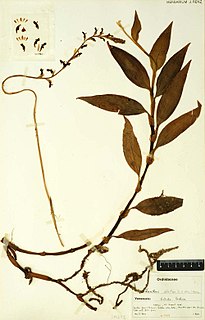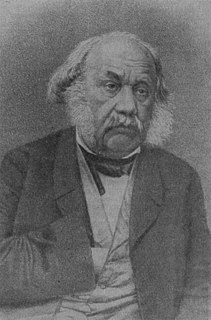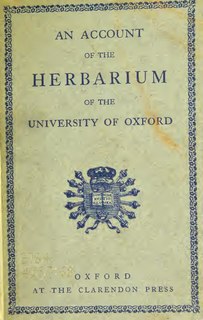External links
Coordinates: 51°26′15.48″N0°56′30.98″W / 51.4376333°N 0.9419389°W
The University of Reading Herbarium (RNG) is a herbarium on the University of Reading's Whiteknights Campus.
Along with the Cole Museum, it forms part of the university's School of Biological Sciences, and is principally used for teaching and research purposes. The herbarium has over 400,000 specimens from around the world but has its most extensive collections from the Euromediterranean area, supplemented with special collections from the Falkland Islands and southern South America. The herbarium provides a research resource for some 50 staff and 500 students in Biological Sciences as well as providing material via loans to other registered herbaria.
RNG was formed from the herbaria of the university's departments of Botany and Agricultural Botany (RU), and was founded in the late 1800s.
Coordinates: 51°26′15.48″N0°56′30.98″W / 51.4376333°N 0.9419389°W

A herbarium is a collection of preserved plant specimens and associated data used for scientific study.

In botany, a virtual herbarium is a herbarium in a digitized form. That is, it concerns a collection of digital images of preserved plants or plant parts. Virtual herbaria often are established to improve availability of specimens to a wider audience. However, there are digital herbaria that are not suitable for internet access because of the high resolution of scans and resulting large file sizes. Additional information about each specimen, such as the location, the collector, and the botanical name are attached to every specimen. Frequently, further details such as related species and growth requirements are mentioned.

Nancy Tyson Burbidge was an Australian systemic botanist, conservationist and herbarium curator.
The Western Australian Herbarium is the State Herbarium in Perth, Western Australia.

Nikolai Stepanovich Turczaninow was a Russian botanist and plant collector who first identified several genera, and many species, of plants.

The Harvard University Herbaria and Botanical Museum are institutions located on the grounds of Harvard University at 22 Divinity Avenue, Cambridge, Massachusetts. The Botanical Museum is one of three which comprise the Harvard Museum of Natural History.

Oakes Ames was an American biologist specializing in orchids. His estate is now the Borderland State Park in Massachusetts. He was the son of Governor of Massachusetts, Oliver Ames, and grandson of Congressman Oakes Ames.

Neville Graeme Marchant is a retired Western Australian botanist. He was formerly the Director of the Western Australian Herbarium.

The Department of Plant Sciences, at the University of Oxford, England, was a former Oxford department that researched plant and fungal biology. It was part of the university's Mathematical, Physical and Life Sciences Division. From 1 August 2022 its functionality merged with the Department of Zoology to become the Department of Biology at the University of Oxford.

The Bolus Herbarium was established in 1865 from a donation by Harry Bolus of his extensive herbarium and library to the South African College, which later became the University of Cape Town.

The University and Jepson Herbaria are two herbaria that share a joint facility at the University of California, Berkeley holding over 2,200,000 botanical specimens, the largest such collection on the US West Coast. These botanical natural history museums are on the ground floor of the Valley Life Sciences Building on the main campus of the university in Berkeley, California. There are ancillary collections such as the Marine Algal Collection, Fruit & Cone Collection, Horticultural Herbarium and Spirit Collection. The herbaria hold many type specimens, especially of Western North American and Pacific Rim plants. Holotypes are maintained separately for both herbaria. The Charterhouse School Herbarium is housed separately within the University Herbarium. The Herbaria have an open house every year on Cal Day with a range of activities for children and adults, and the Jepson Herbarium runs a series of workshops and public programs focusing on botanical education and the flora of California throughout the year.
David Allardice Webb was an Irish botanist and chair of botany at Trinity College, Dublin from 1949 to 1966. He was son of George and Dr Ella Webb. In Ireland he had studied under Henry Horatio Dixon and also studied in the United Kingdom. In addition to botany he edited a history of Trinity College with R. B. McDowell and published a book on the history of art in Trinity College. In 1982 he received the Boyle Medal of the Royal Dublin Society. His botanical specialties included his work as a leading taxonomist of Saxifraga. He died in a car accident on his way to the University of Reading's herbarium. The eighth edition of An Irish Flora was renamed Webb's An Irish Flora in his honour.
The University of Michigan Herbarium is the herbarium of the University of Michigan in Ann Arbor, Michigan, in the United States. One of the most-extensive botanical collections in the world, the herbarium has some 1.7 million specimens of vascular plants, algae, bryophytes, fungi, and lichens, and is a valuable resource for teaching and research in biology and botany. The herbarium includes many rare and extinct species.

A scientific collection is a collection of items that are preserved, catalogued, and managed for the purpose of scientific study.
Edwin Bunting Bartram was an American botanist and bryologist. He described many dozens of new species in bryology, and contributed 143 works, including a number of books. He was a member of the Academy of Natural Sciences, Philadelphia Botanical Club, Torrey Botanical Club, New England Botanical Club, Sullivant Moss Society and British Bryological Society.

The National Herbarium of New South Wales was established in 1853. The Herbarium has a collection of more than 1.4 million plant specimens, making it the second largest collection of pressed, dried plant specimens in Australia, including scientific and historically significant collections and samples of Australian flora gathered by Joseph Banks and Daniel Solander during the voyage of HMS Endeavour in 1770.

Fielding-Druce Herbarium, part of the Department of Biology, University of Oxford, located on South Parks Road, in Oxford, England. A herbarium is a collection of herbarium sheets, with a dried pressed specimen of the botanic species, whether they were bound into a book by one dedicated individual, or have been amassed into huge collections. They are like plant ID cards. As paper was expensive, multiple specimens are normally mounted on one sheet. The 2 cores of the Herbarium collection, are bequeathed to the University from Henry Fielding (1805-1851) containing a non-British and Irish collection. It also covers most taxonomic groups and geographical areas. It is particularly rich in nineteenth century material from the Americas and south and south east Asia. The other core a British and Irish collection from George Claridge Druce (1850-1932) in 1932, this is particularly rich in specimens from Oxfordshire, Buckinghamshire and Berkshire. Other collections were added later.
The Australasian Virtual Herbarium (AVH) is an online resource that allows access to plant specimen data held by various Australian and New Zealand herbaria. It is part of the Atlas of Living Australia (ALA), and was formed by the amalgamation of Australia's Virtual Herbarium and NZ Virtual Herbarium. As of 12 August 2014, more than five million specimens of the 8 million and upwards specimens available from participating institutions have been databased.

Patricia Holmgren is an American botanist. Holmgren's main botanical interests are the flora of the U.S. intermountain west and the genera Tiarella and Thlaspi. Holmgren was the director of the herbarium at the New York Botanical Garden from 1981–2000, and editor of Index Herbariorum from 1974–2008.

Delzie Demaree was an American botanist, and plant collector. His place of death is reported as Bonham, Arkansas or Texas.